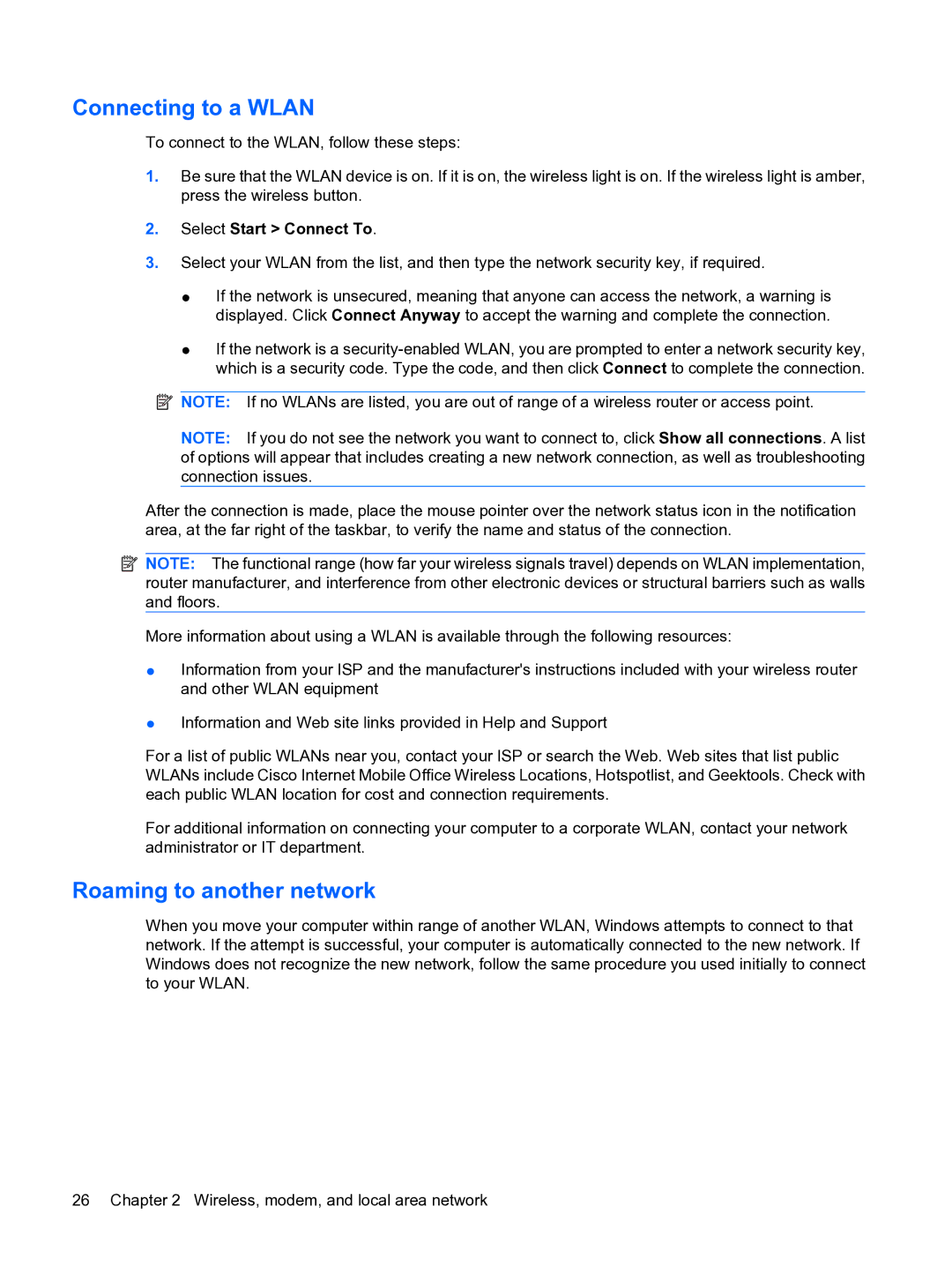
Connecting to a WLAN
To connect to the WLAN, follow these steps:
1.Be sure that the WLAN device is on. If it is on, the wireless light is on. If the wireless light is amber, press the wireless button.
2.Select Start > Connect To.
3.Select your WLAN from the list, and then type the network security key, if required.
●If the network is unsecured, meaning that anyone can access the network, a warning is displayed. Click Connect Anyway to accept the warning and complete the connection.
●If the network is a
![]() NOTE: If no WLANs are listed, you are out of range of a wireless router or access point.
NOTE: If no WLANs are listed, you are out of range of a wireless router or access point.
NOTE: If you do not see the network you want to connect to, click Show all connections. A list of options will appear that includes creating a new network connection, as well as troubleshooting connection issues.
After the connection is made, place the mouse pointer over the network status icon in the notification area, at the far right of the taskbar, to verify the name and status of the connection.
![]() NOTE: The functional range (how far your wireless signals travel) depends on WLAN implementation, router manufacturer, and interference from other electronic devices or structural barriers such as walls and floors.
NOTE: The functional range (how far your wireless signals travel) depends on WLAN implementation, router manufacturer, and interference from other electronic devices or structural barriers such as walls and floors.
More information about using a WLAN is available through the following resources:
●Information from your ISP and the manufacturer's instructions included with your wireless router and other WLAN equipment
●Information and Web site links provided in Help and Support
For a list of public WLANs near you, contact your ISP or search the Web. Web sites that list public WLANs include Cisco Internet Mobile Office Wireless Locations, Hotspotlist, and Geektools. Check with each public WLAN location for cost and connection requirements.
For additional information on connecting your computer to a corporate WLAN, contact your network administrator or IT department.
Roaming to another network
When you move your computer within range of another WLAN, Windows attempts to connect to that network. If the attempt is successful, your computer is automatically connected to the new network. If Windows does not recognize the new network, follow the same procedure you used initially to connect to your WLAN.
26 Chapter 2 Wireless, modem, and local area network
